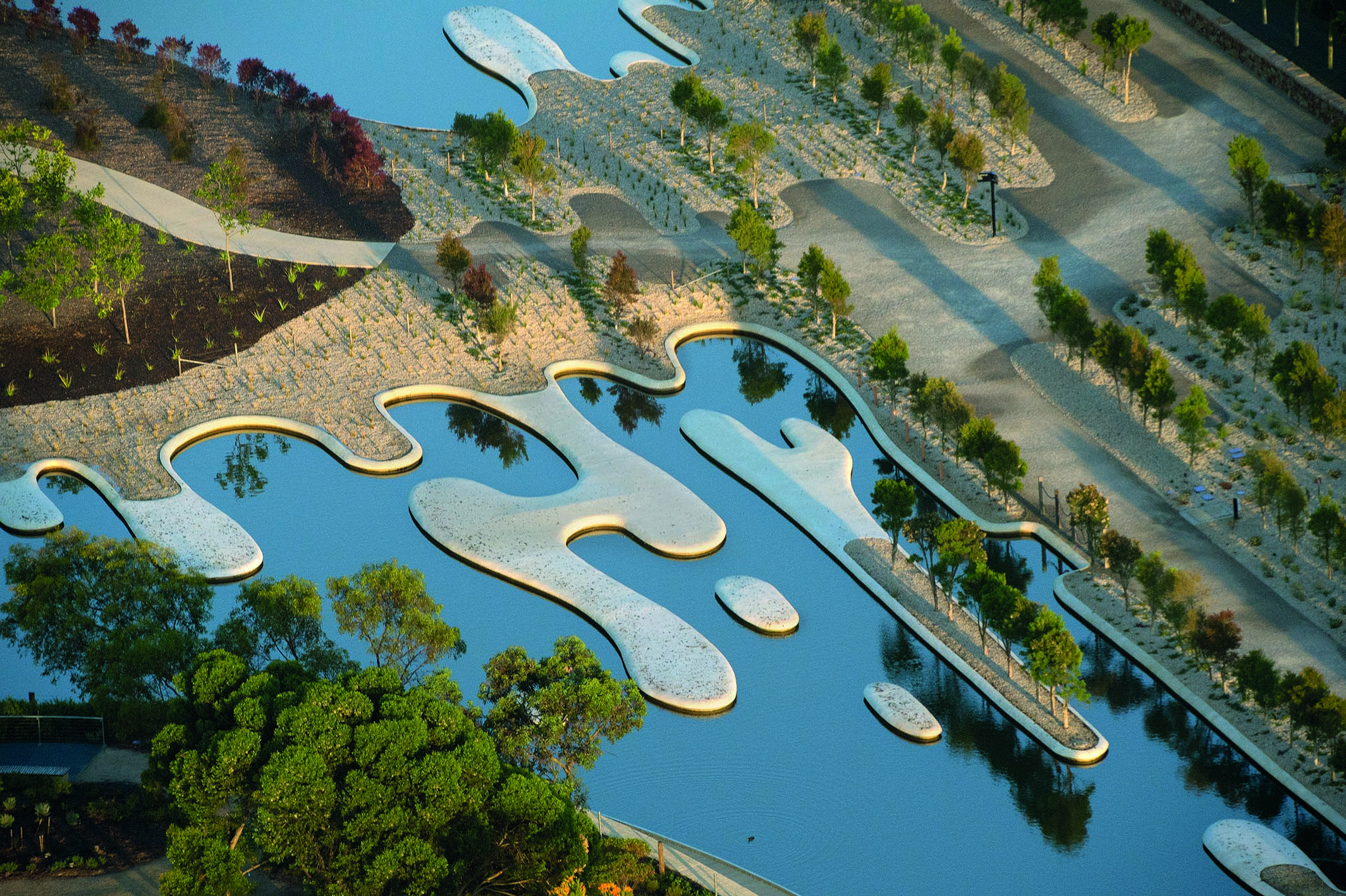
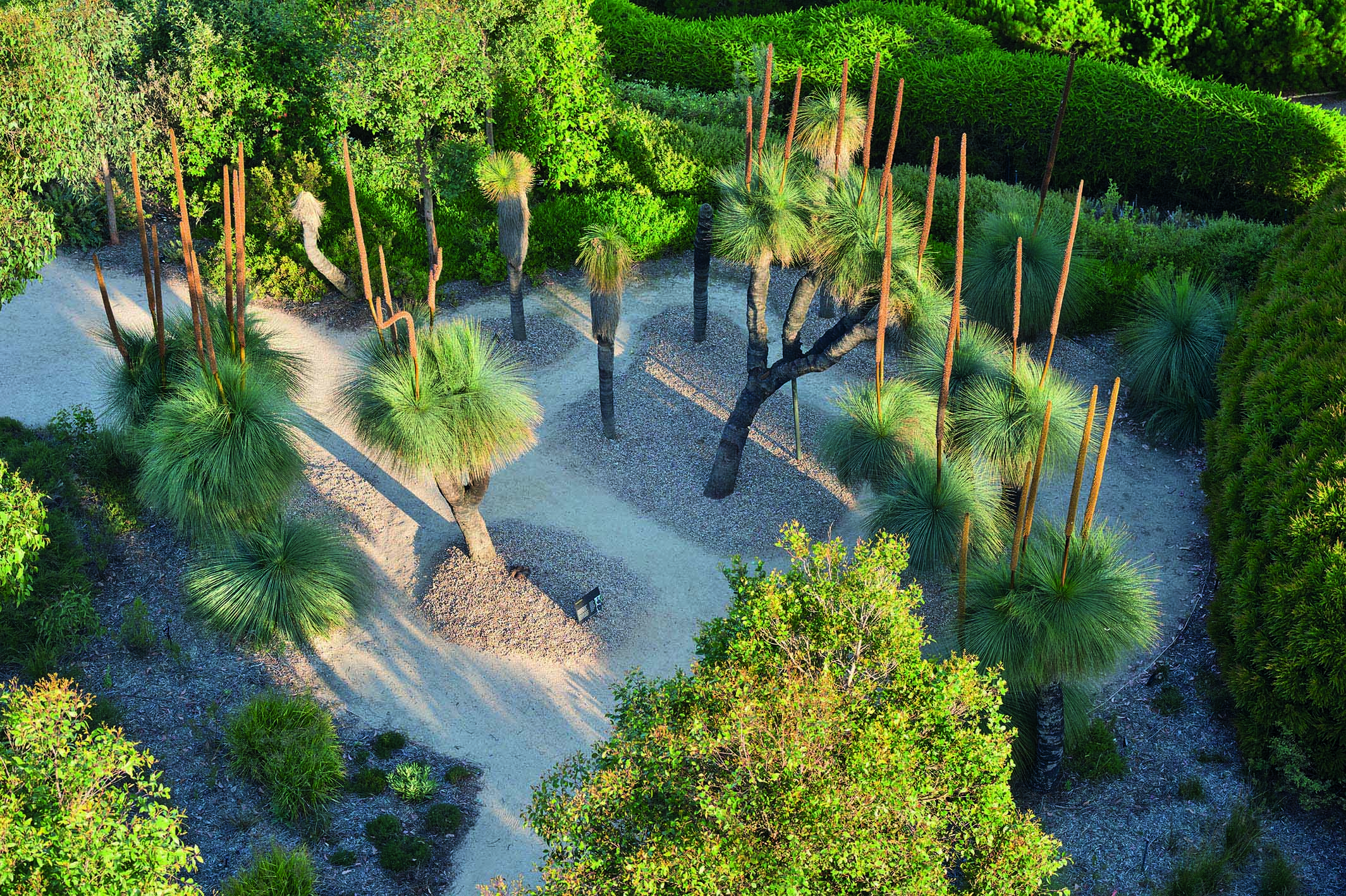
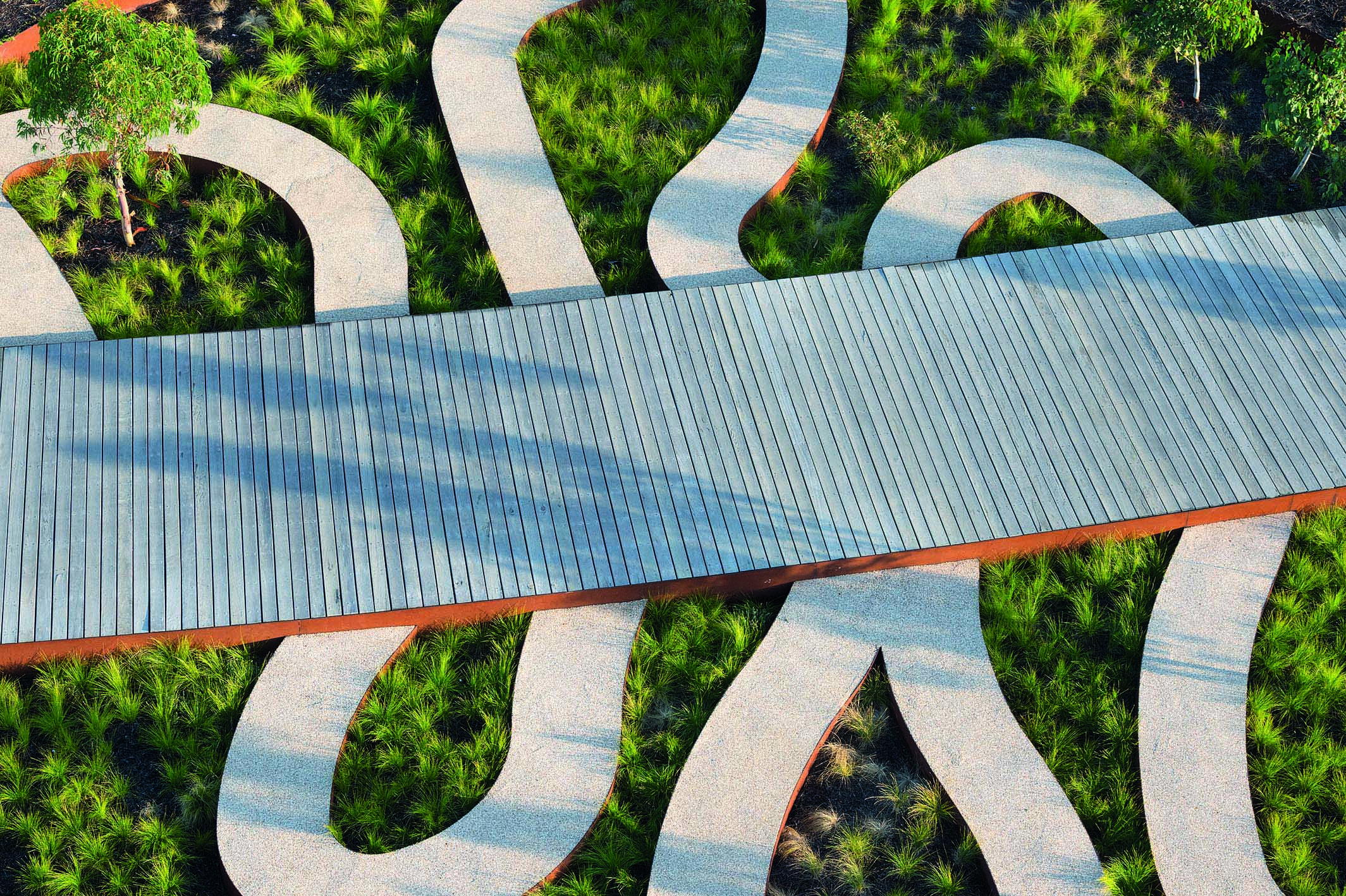
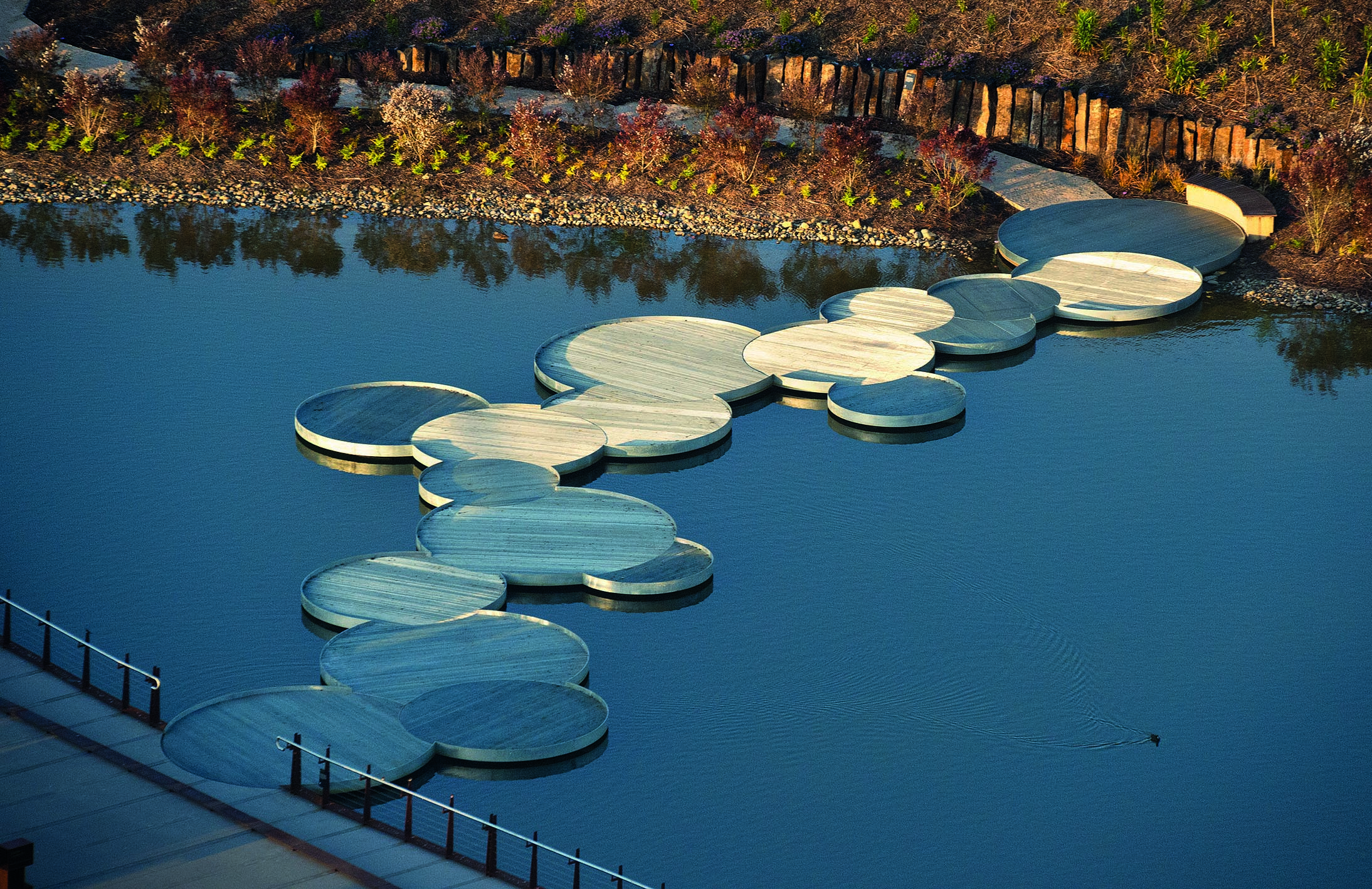
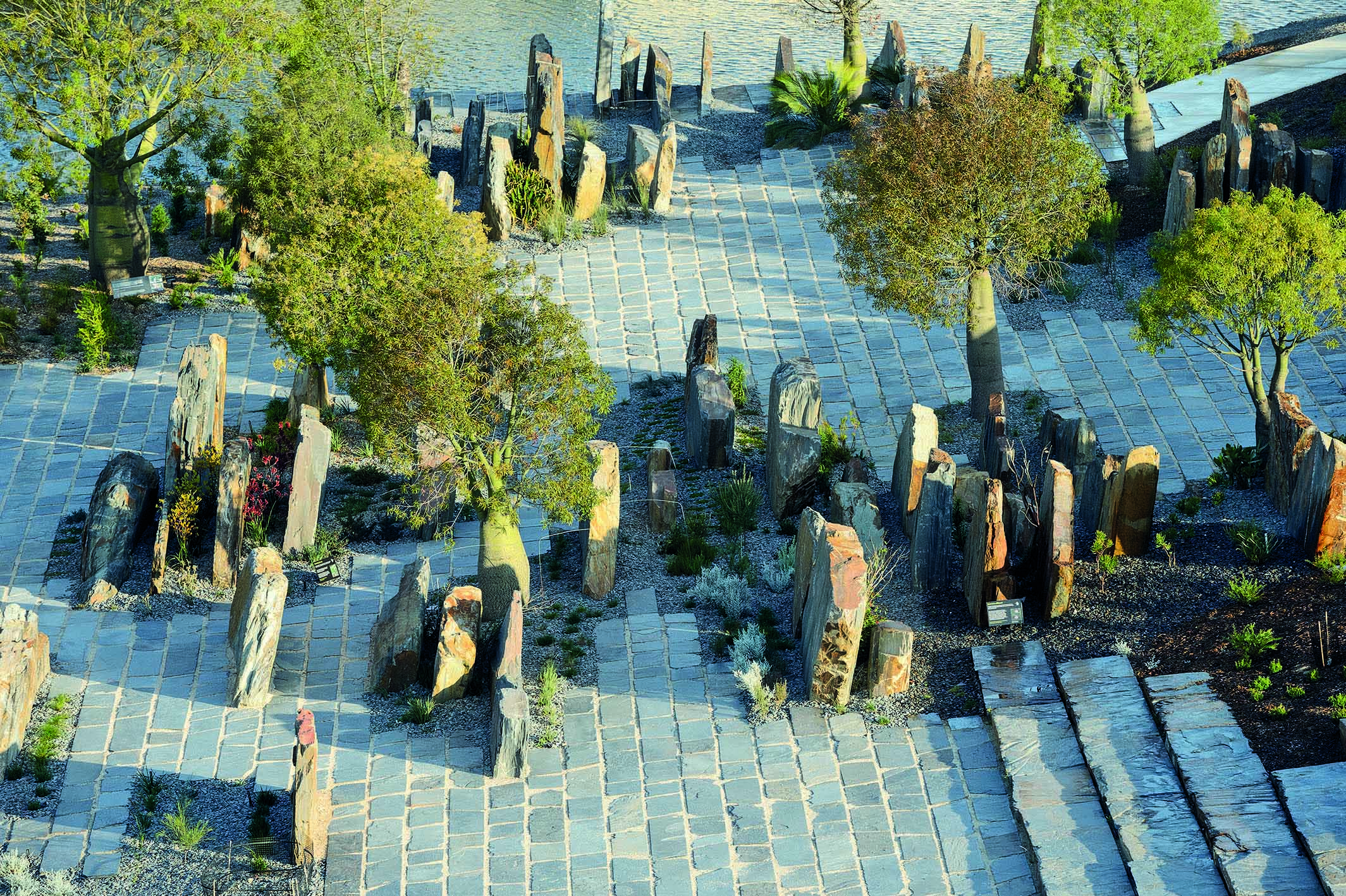
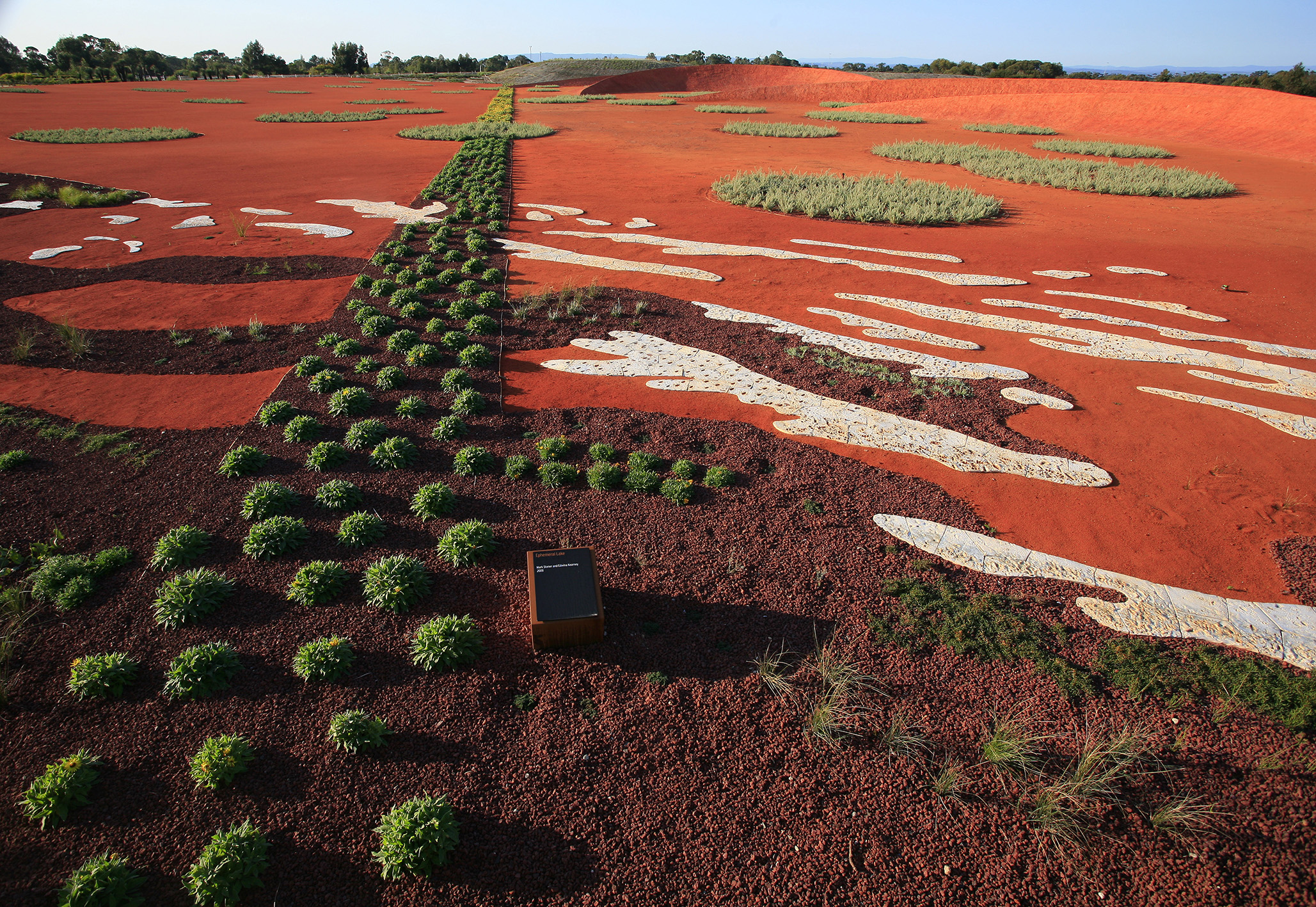
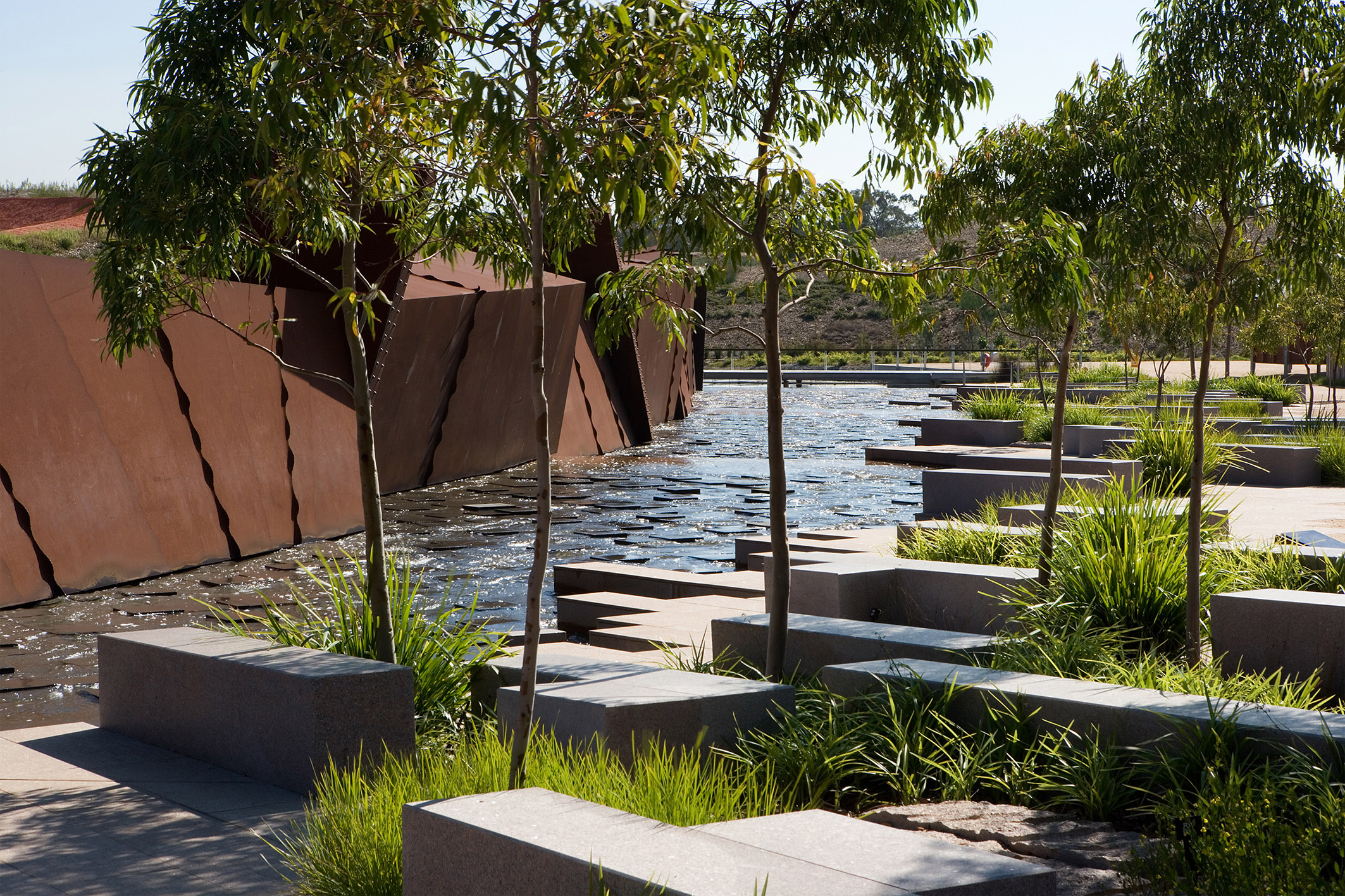
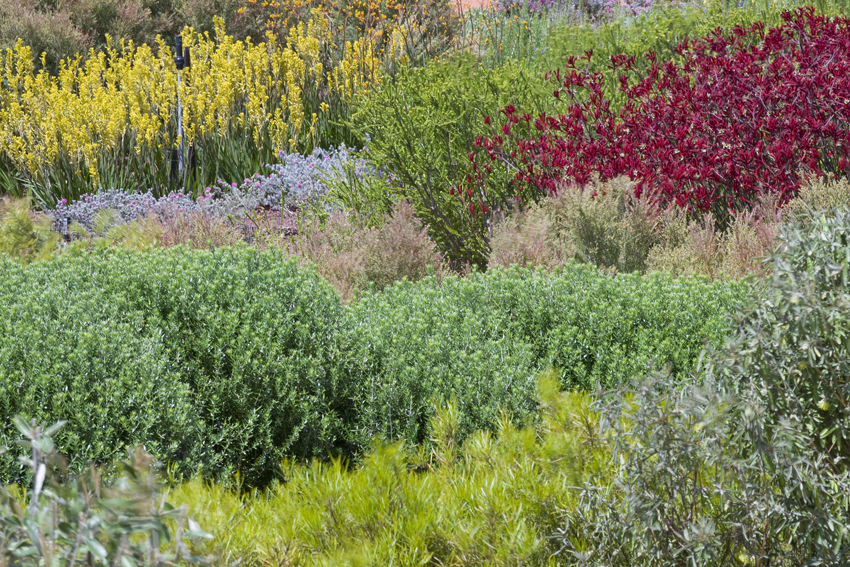
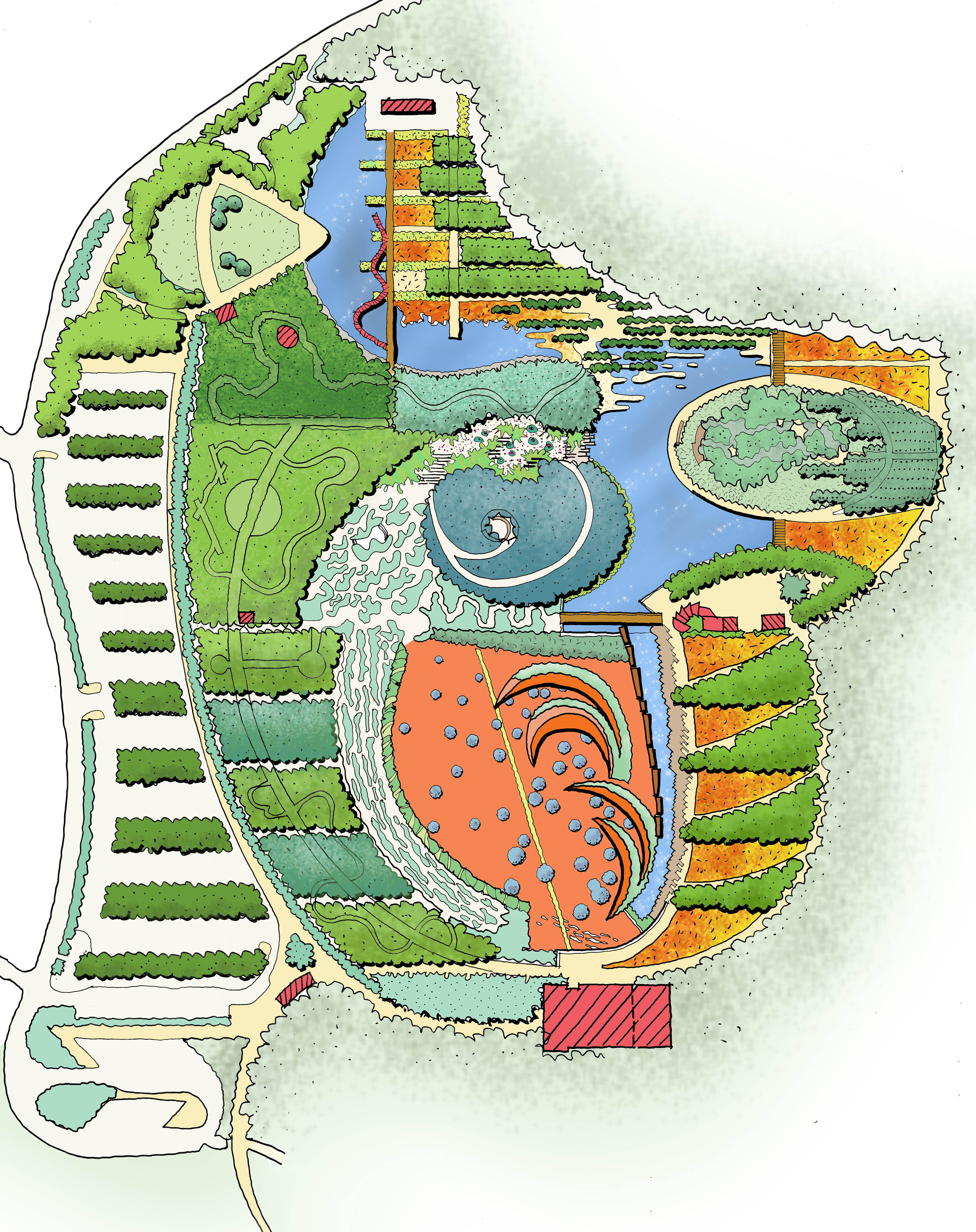
“Australian’s are surrounded by ocean and ambushed from behind by desert – a war of mystery on two fronts”
Lands Edge Tim Winton
Introduction
In a former sand quarry, an hour’s drive from Melbourne, Australia, a new botanic garden has been completed, one that allows visitors to follow a metaphorical journey of water through the Australian landscape, from the desert to the coastal fringe.
Via the artistry of landscape architecture, this integrated landscape brings together horticulture, architecture, ecology, and art to create the largest botanic garden devoted to Australian flora. It seeks, through the design of themed experiences, to inspire visitors to see our plants in new ways.
The completion of the Australian Garden comes at a time when Botanic Gardens world-wide are questioning existing research and recreational paradigms and refocussing anew on messages of landscape conservation and a renewed interest in meaningful visitor engagement.
The Australian Garden engages visitors by expressing the love – hate relationship Australian’s have with their landscape. It is embraced or shunned by its people, loved for its sublime beauty or loathed as the cause of hardship. Artists and writers have often been inspired to design or write in response to subtle rhythms, flowing forms and tenacious flora of our landscape. Whilst others have attempted to order the landscape, and conceive of it as humanly designed form.
At the Australian Garden these tensions are the creative genesis of the design, expressing our reverence and sense of awe, the natural landscape, and our innate impulse to change it, to make it into a humanly contrived form of beautiful, yet our own, work.
On the east side of the garden, exhibition gardens, display landscapes, research plots and forestry arrays illustrate our propensity to frame and order our landscapes in more formal manners, whilst on the west, visitors are subsumed by gardens that are inspired by natural cycles, immersive landscapes and irregular floristic forms. Water plays a mediating role between these two conditions, taking visitors from rockpool escarpments, meandering river bends, melaleuca spits and coastal edges.
An Experience
Gardens in Australia have traditionally been modelled on European precedents or more recently attempted to recreate the seductive qualities of the Australian landscape. The Australian Garden by contrast uses the Australian landscape as its inspiration to create a sequence of powerful sculptural and artistic landscape experiences that recognize its diversity, breadth of scale and wonderful contrasts. Via these creative landscape compositions, the project seeks to stimulate and educate visitors into the potential use and diversity of Australian flora.
Distillation
Visitors engage with the botanical collections via an intrinsically interpretive experience. Didactic signage is shunned in favour of a landscape design approach that communicates narratives via experience and immersion. Here design is a catalyst to evoke qualities of the Australian landscape, via abstraction, distillation and sculpted experiences. This design approach captures a heightened experience that does not rely on mimicry, or simulacra.
Designed experiences such as walking across the tangle of a Eucalypt forest floor, or the passage through wind pruned coastal heath, is juxtaposed amongst the order reminiscent of forestry plantations and gardens that evoke the patterns of urbanisation on our coastal fringe. The botanical collection plays a fundamental supporting role in accentuating the interpretive experience.
Here the narrative has informed the composition and the experience reinforces the message. It aims to strike a balance, between abstraction, metaphor and poetry. Not every visitor will take home the same message, as each will have their own experience. It allows many layers of emotional and intellectual discovery.
Choreography
Walking through the Australian landscape is a journey of constant weaves, shifts and jumps. One never travels in a straight line. The flora gets in the way! This choreography of movement, is captured in The Australian Garden, where visitors are taken on a distinctly unconventional journey. Visitors are invited into the landscape via a pathway system that constantly morphs according to the landscape narrative and garden experience. Crusty paths in the Gondwana Garden, shift to become over water circular grated plate which connects to a field of stones where the actual path is no longer apparent.
Equally as there is not one linear narrative to describe the Australian landscape, paths in the Australian landscape lead visitors on many journeys and many experiences. This is a garden of discovery, of multiple experiences and of cumulative knowledge.
The New Public
As is the largest botanic garden devoted to the display of Australian flora, the Australian Garden is now host to a vast collection of plants for scientific, educative, and conservation purposes. It plays a vital role in helping scientists and the public understand the history, present day uses and what the future may hold for plants in natural and urban environments. It embraces the importance of biodiversity and our increased understanding of the need to protect species and ecosystems to safeguard the world’s biological heritage.
The Australian Garden however performs another role, one as the new public realm for an ever expanding city. Messages of biodiversity and sustainability are integrated into its role as a new major visitor destination where not only do visitors come to explore the plant collections but to also be entertained, through interactive workshops, music, cinema, markets, cafes and play.
A Rehabilitation Strategy
The Australian Garden is located in a former sand quarry that had denuded the vegetation and exhumed all traces of soil. Rather than importing new soil media, the design team, working with horticulturalist and designer, Paul Thompson, asked how could the design and selection of flora respond creatively to this challenging site condition. The outcome utilizes 170,000 plants across 1700 species all adapted to this challenging site condition, with species selected not only for their suitability to low organic media, but also their adaptation to low water utilization and drought tolerance.
Conclusion
The Garden is considered to be at the forefront of emerging environmental concerns regarding biodiversity, low water dependent horticulture, water sensitive design and sustainable material choices. These issues are integrated into the overall composition, demonstrating that design is more than the sum of its parts but instead a totally holistic and creative outcome.
Image Captions
TCL_ Australian Garden_John Gollings_01
Parallel bands of Malaleucas arranged alongside abstracted sand spits, providing a threshold into the Coastal Edge Garden.
TCL_ Australian Garden_John Gollings_02
Braided plantings through Xanthorrhoea sp, Grass Tress ensure the flowing forms of nature remain the dominant visitor experience.
TCL_ Australian Garden_John Gollings_03
A playful network of paths within the Eucalypt Walk evoke the patterns found on the trunks of Scribbly Gum Eucalyptus haemastoma.
TCL_ Australian Garden_John Gollings_04
The Lilypad bridge is designed using galvanised grates that allow visitors to look into the water as they traverse the lake. It hovers above the water and connects to the Gondwana Garden.
TCL_ Australian Garden_John Gollings_05
The Weird and Wonderful garden is home to Boab trees and large slabs of local slate. Intimate spaces are enframed by mass vertical slabs forming an edge to the Melaleuca spits.
TCL_Australian Garden_Peter Hyatt_06
The Sand Garden with ‘North Line’ and Mark Stoner and Edwina Kearneys ‘Ephemeral Lake’ sculpture in foreground, which conveys a sense of aridity and seasonality.
TCL_Australian Garden_Ben Wrigley_07
The Rockpool Waterway: a cyclic waterway symbolic of Inland Waterway with the Escarpment Wall in the background.
TCL_ Australian Garden_Ben Wrigley_08
Paul Thompson’s painterly detailed planting design conveys the variety of textures, seasonal colour and forms of Australian flora.
TCL_Australian Garden MasterPlan
The design of the masterplan seeks to immerse visitors within each landscape expression.
| Tipologia | Parcs no urbans |
| Promotor | Royal Botanic Gardens, Cranbourne |
| Promoció | P?ca |
| Localització | Victoria, Cranbourne Royal Botanic Gardens, Cranbourne, Austràlia |
| Àrea | 250000 m² |
| Cost | 28,81 €/m² |
| Any inici | 2006 |
| Any finalització | 2012 |